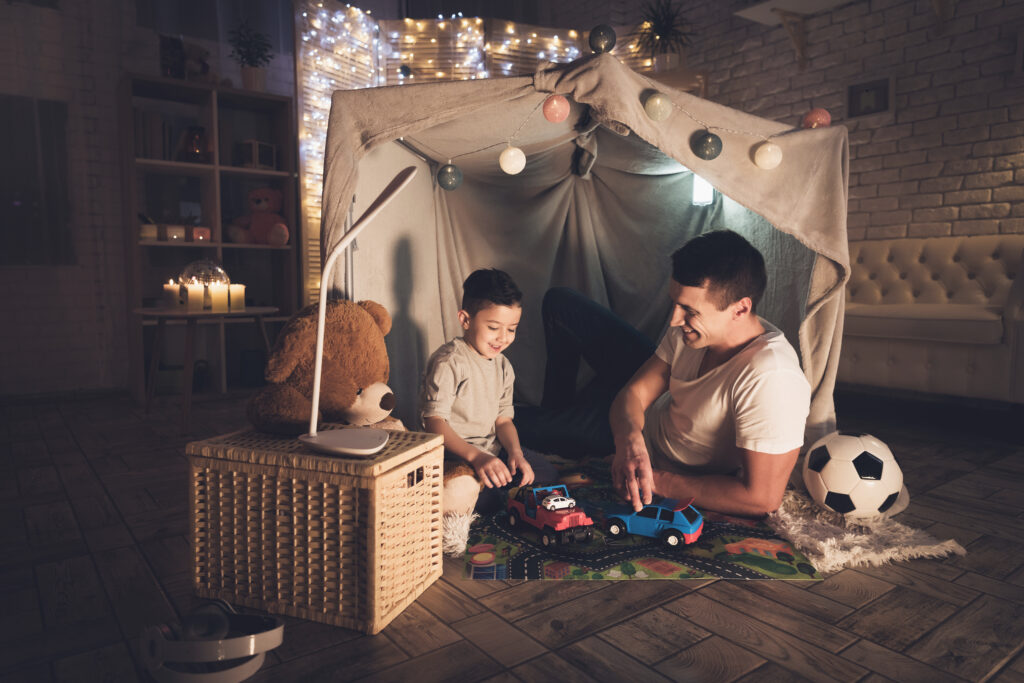
Authentic Learning at Home
Written by: Emalise Mitchell
What is Authentic Learning?
Authentic learning is an approach that allows children to learn through hands-on activities. Authentic learning gives children an opportunity to discover and investigate while connecting to the real-world context of what they are learning.
How Do I Make Learning Authentic at Home for My Child?
Below are a few tips for inspiring authentic learning:
- Ask: What Interests My Child? What excites your child or sparks their interest? Is it seeing a caterpillar on the sidewalk, or the airplanes flying overhead, or mixing paint colors to discover new colors? Identifying the topics and concepts that are interesting to your child is the first step in organizing ideas for authentic learning and exploration.
- Make Real-World Connections with Interests Once you know what your child is fascinated by or curious about, you have an opportunity to connect practical learning skills with their interests. For example, if your child is excited by insects and bugs, you can go on a walk to count as many bugs as you can find. Then, you could draw a few pictures of the bugs, and then listen to a read-aloud of the story The Very Hungry Caterpillar, and discuss the process of how a caterpillar becomes a butterfly. By engaging in these activities, you encourage your child’s exploration of math skills (counting bugs), literacy skills (listening to a story), and science (the life cycle of a caterpillar). hat excites your child or sparks their interest? Is it seeing a caterpillar on the sidewalk, or the airplanes flying overhead, or mixing paint colors to discover new colors? Identifying the topics and concepts that are interesting to your child is the first step in organizing ideas for authentic learning and exploration.
- Engage in Exploration with Your Child As much as possible, explore and discover with your child as they are learning. Children are energized to learn when you are as interested and curious. It is encouraging for children when they see how fun and useful learning can be alongside their parents and family.
- Encourage Sharing Supporting learning through sharing helps a child make real-world connections. Your child can share their drawing with classmates, virtually or in person, or give a family member a tutorial on how to mix red and blue paint colors to make purple. Giving children the chance to share their knowledge and excitement empowers them to keep learning and discovering.
Suggestions for Activities at Home
Recreate a Recipe from a Story
Check out these children’s books that have recipes to try. These books give your child a chance to connect with a story while practicing math and literacy skills as they cook with you.
Build an Imaginary Fort
Give children an opportunity to be imaginative and resourceful through building forts out of blankets or castles out of cardboard. These activities expand their creativity and critical thinking skills. They also practice working together, planning, and communication skills as they design and build their magical kingdom or fort.
Conduct Science Experiments Together
Together, you and your child can explore volcanic eruptions and how to make your own play dough. These – and many more – quick and easy science experiments provide a way to connect curiosity (and hypothesis testing) with science and creativity.
Check out these websites for additional suggestions for authentic learning:
Virtual Field Trips
• https://www.discoveryeducation.com/community/virtual-field-trips/
• https://adventuresinfamilyhood.com/20-virtual-field-trips-to-take-with-your-kids.html
• https://www.nwtrek.org/visit/field-trips/virtual-field-trips/
YouTube
Thousands of videos for your child’s specific interests
PBS
• https://www.pbs.org/parents/thrive/learning-at-home-5-steps-to-support-authentic-learning-projects
• https://www.pbs.org/parents/thrive/simple-ways-to-motivate-your-child-through-curiosity
At-Home Science Experiments
• https://www.sciencefun.org/kidszone/experiments/
• https://sciencebob.com/category/experiments/


